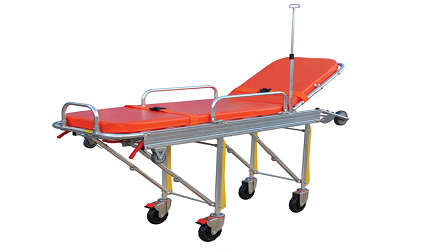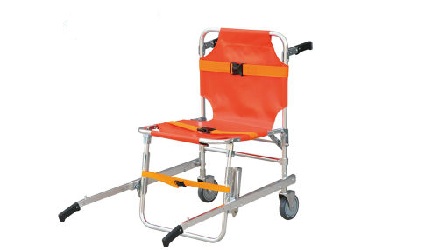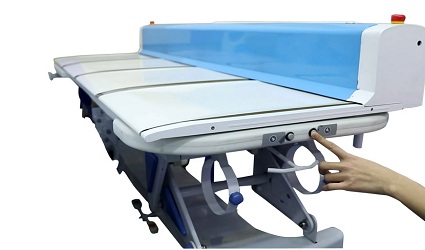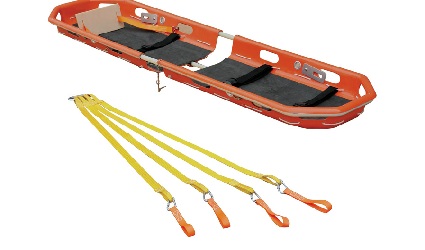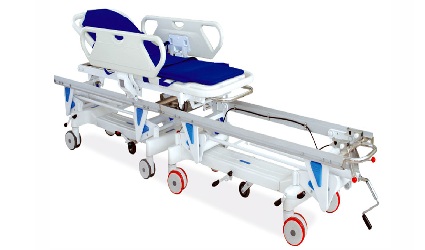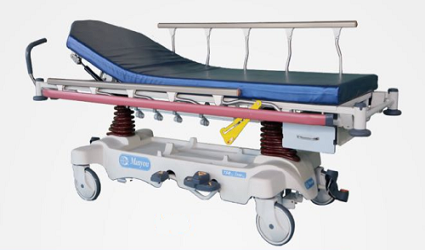What Type of Medical Stretcher Should I Use?
August 13, 2018
Source: Ddu
 1,885
1,885
Emergency situations can occur anywhere, airports and other public areas and obviously in hospitals. These places should be sufficiently equipped with emergency facilities, such as emergency stretchers. Selecting the right one for the task can prove difficult. Our team here at Ddu (www.drugdu.com), the leading global pharmaceutical and medical devices B2B platform, have compiled a list of medical stretchers and their features to help guide you.
1. Emergency Ambulance Stretcher
The emergency ambulance stretcher is characterized by its lightweight, durability and safe usage. Its folding legs are controlled by the handles on both ends of the stretcher, and the legs can be folded under the stretcher automatically when loaded into an ambulance. The bed surface is made of foamed cushion and the adjustable back allows the patient to feel comfortable. The emergency ambulance stretcher is able to attach infusion equipment simplifying logistics in an emergency situation. The solid structure ensures that they can be loaded by one person and be locked at a desired position in the ambulance.
The stair stretcher is ideal for home care needs when transporting patients up and down stairs or when carrying them through narrow passages. It is commonly made of aluminum alloy materials and weighs approximately 8kg making it light, safe and reliable. The top of the stretcher has two handles to facilitate the lifting of patients during the transport process. The stretcher can also be folded to save space both in hospital and at home.
When patients are being transferred with the help of a nurse, it can easily cause pain or even secondary injuries. The patient transfer stretchers help to avoid secondary injuries of patients and reduce the workload of medical staff. Various patient transfer stretchers incorporate AI technology allowing to feel a minimal sense of movement during transfers, securing their stability and comfort.
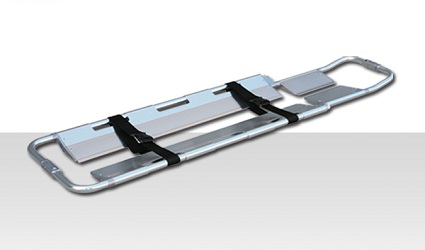
The Scoop Stretcher is a widely used, simple stretcher and also one of the most affordable stretchers. It usually has a hinged and joined arrangement, allowing it to be separated into two parts. They are used to carry immobilize patients or a person suffering from a spinal cord injury.
The basket stretcher is designed for air-sea rescue operations to rescue injured persons from locations where the altitude is high, from water or complex terrains. With an adjustable feet-securing mechanism, safety belts, a mattress, and a special sling device, it is ideal for lifting and transport by helicopter. It can be broken into two halves which can be back-packed to the point of rescue and assembled in seconds.
6. Multifunctional Connecting Stretcher for the Operating Room
The connecting stretcher is used to transport patients to the operating room. These two single stretchers can easily be lifted up or down, enabling the two single-stretchers to come to the same level. The central-control braking system in both single-stretchers is reliable and steady. It is automatically locked when the bed slides to one of the single stretchers. This stretcher is an excellent choice for the operating room.
7. Medical Hydraulic Stretcher
Medical hydraulic stretchers utilize hydraulic lifting systems mainly used in the emergency rooms, ICUs and operating rooms. A lock and releasing device ensures the safety of patients when the stretcher rises. The four corners of the stretcher are equipped with anti-collision guide wheels to effectively protect the patient's safety and can buffer the impact of collisions.
By Ddu
Read more on
- Breakthrough Device Designation Granted to Digital Intervention for Alzheimer’s August 27, 2018
- FDA Approved Eye Drop Oxervate to Treat Neurotrophic Keratitis August 27, 2018
- Experimental Ebola Treatments Approved by Congo as it Sees Flare-Up in Cases August 24, 2018
- First Dual-Lead Nerve Stimulator for Pain Management gets FDA Nod August 22, 2018
- Bristol-Myers Squibb’s Opdivo Ensures a Lung Cancer Position August 22, 2018
your submission has already been received.
OK
Subscribe
Please enter a valid Email address!
Submit
The most relevant industry news & insight will be sent to you every two weeks.

